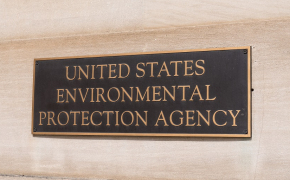Litigation Risk to Ethylene Oxide Emitters Could Increase Under Biden Administration
Key Takeaways
- What: The U.S. Environmental Protection Agency (EPA)’s scientific work on ethylene oxide (EO) has been central to the basis of claims in recent toxic tort suits based on EO exposures; the Biden Administration has an opportunity to retrench that scientific work. And, its priority focus on communities and environmental justice (EJ) could add to the momentum behind current litigation and enforcement risk related to EO.
- Who's Affected?: Facilities that emit EO, including commercial sterilizers, EO producers, miscellaneous organic chemical manufacturers, hospital EO sterilizers, polyether polyols producers, and synthetic organic chemical manufacturers.
- What Should I Do?: Prepare now to mitigate litigation and enforcement risk, and consider taking these steps:
- Conduct a privileged expert review of EO processes to identify possible fugitive emissions points;
- Evaluate whether readily available equipment upgrades could reduce EO emissions, including fugitive emissions;
- Analyze, under privilege, all compliance monitoring data submitted to agencies, to assess how those data may be viewed in a litigation or enforcement context;
- Prepare a proactive litigation strategy that includes understanding communities where facilities are located, addresses EJ, and mitigates future risk.
Two key EPA opportunities will present themselves early in the Biden Administration and could bring momentum to EO class actions.
First, the Biden Administration has a unique and ready-made opportunity to take a fresh look at the highly controversial IRIS value that was used to support the final “residual risk and technology” (RTR) rule for the Miscellaneous Organic Chemical Manufacturing (MON) source category (Final Rule or MON RTR) that was issued this summer. (85 Fed. Reg. 49084). The IRIS value, developed at the tail-end of the Obama Administration, establishes the carcinogenicity of EO and risk from exposures and has already been the basis for private toxic tort suits for exposures. When EPA issued the MON, the Agency delayed its response to the numerous public comments on science underpinning the IRIS value.
Litigation about the MON has already started, but in the meantime, in a recent pesticide rulemaking on EO, EPA officially acknowledged other valid studies of the risk presented by EO (including that of the Texas Commission on Environmental Quality (TCEQ) discussed further below) indicating risks that were orders of magnitude lower than the IRIS value. The Biden Administration will have the opportunity to review and respond to comments on the MON and shape the direction of EPA’s posture on the pending litigation about the MON. EPA’s eventual response to comments about the IRIS could affect the reach of toxic tort suits that are already on the rise, especially if EPA retrenches its original position.
Second, the Biden Administration’s environmental platform makes community focus and EJ a marquee issue, and EO may provide an early EJ opportunity for the new Administration. The EPA Office of Inspector General (OIG) concluded last March that EPA should inform residents living near EO facilities about EO exposures, although it left to Texas and Louisiana – states with significant EO emissions footprints – that duty. OIG’s concerns focused on EPA’s revised corrective action plan failing to address the “seriousness associated with the 25 high-priority ethylene oxide-emitting facilities that the EPA had previously identified” and commitment to “interactive outreach with residents using risk communication tools such as virtual webinars and workshops.” That Report resulted in high-profile inter-agency skirmishing between EPA and OIG, but OIG has remained steadfast in its findings. Id. Like the IRIS value, the Biden Administration has an unusually ripe opportunity to review – and potentially implement – the recommendations of the Inspector General in what could be an easy and early EJ example for the new Administration. The Biden Administration could also ask EPA Region 6 to step in and notify communities near identified facilities.
An official EPA warning to a community could well set the stage for collective community concerns and further embolden plaintiffs’ lawyers to reach out for potential class members. Coupled with potential retrenchment of the existing IRIS science, the litigation dockets relating to EO may well increase. Manufacturing and sterilization facilities are already facing suits from area residents for alleged health effects from EO emissions. Recently, environmental groups and a number of states have sued EPA over weak national emission rules, including those related to EO, for hundreds of chemical facilities where pollution allegedly is linked to cancer. As Plaintiffs’ counsel monitor trends and non-governmental organization efforts against plastics on all levels of the value chain, suits against industries with EO emissions will continue rise.
Other activities also could increase enforcement litigation risk, outside of toxic torts. Agency enforcement of EO non-compliance could well increase under the Biden Administration if it continues to view EO as a priority constituent of concern and if warned communities demand action. Types of enforcement cases have already included:
- Identifying locations of upset reports;
- Current emissions data and developing more sensitive tests to measure EO in ambient air;
- Inspections pursuant to the Risk Management Plan Rule and Clean Air Act 112 General Duty Clause; and
- Information requests sent to sterilizing facilities. EPA issued Clean Air Act 114 information requests to sterilizing facilities to collect data to support the Commercial Sterilizer Advanced Notice of Proposed Rulemaking (ANPRM) technology review. Questions similar to those sent to sterilizing facilities could be sent to EO producers, forming the basis for the next wave of EPA compliance initiatives.
Citizen suit action is possible as well where citizens can demonstrate that EPA or the state have failed to enforce permitting or regulatory standards. See 42 U.S.C. § 7604.
Finally, adding to the mix are state EO actions, with an evolving patch-work of initiatives that only complicates the terrain for industry. On the one hand, TCEQ released a competing standard to the EO IRIS model for the purposes of a state-based ESL (which are used in the air modeling to set permit limits). TCEQ’s study received years of scientific review and will likely play into toxic tort suits under way and in the future. By contrast, EO captured the attention of the Illinois state legislature, which adopted to two separate bills to restrict EO. Senate Bill 1854 (PA 101-0023) requires, among others, 100% capture of fugitives from sterilizers and 99% reduction of emissions at exhaust points. Senate Bill 1854 (PA 101-0023) requires the Illinois EPA (IEPA) to establish site-wide caps on EO for all non-sterilization facilities that emit EO. IEPA has led the way with high-profile enforcement cases, including issuance of total shut-down orders to a sterilizer company. Other states have begun to focus on EO, including Georgia and South Carolina.
Industry is in a unique position to get ahead of the issue now to manage the risks posed by these dynamic and integrated drivers giving momentum to EO litigation and enforcement cases. Now is the time to assess and mitigate company risk in a holistic, proactive, and community-inclusive manner.
Beveridge & Diamond tracks and advises clients on the rapidly evolving regulatory landscape for emerging chemicals, including ethylene oxide, and defends clients in related enforcement actions, class actions, and toxic tort cases. For more information, please contact the authors. Visit our Election Resources Page for additional resources regarding what to expect under the Biden Administration.










